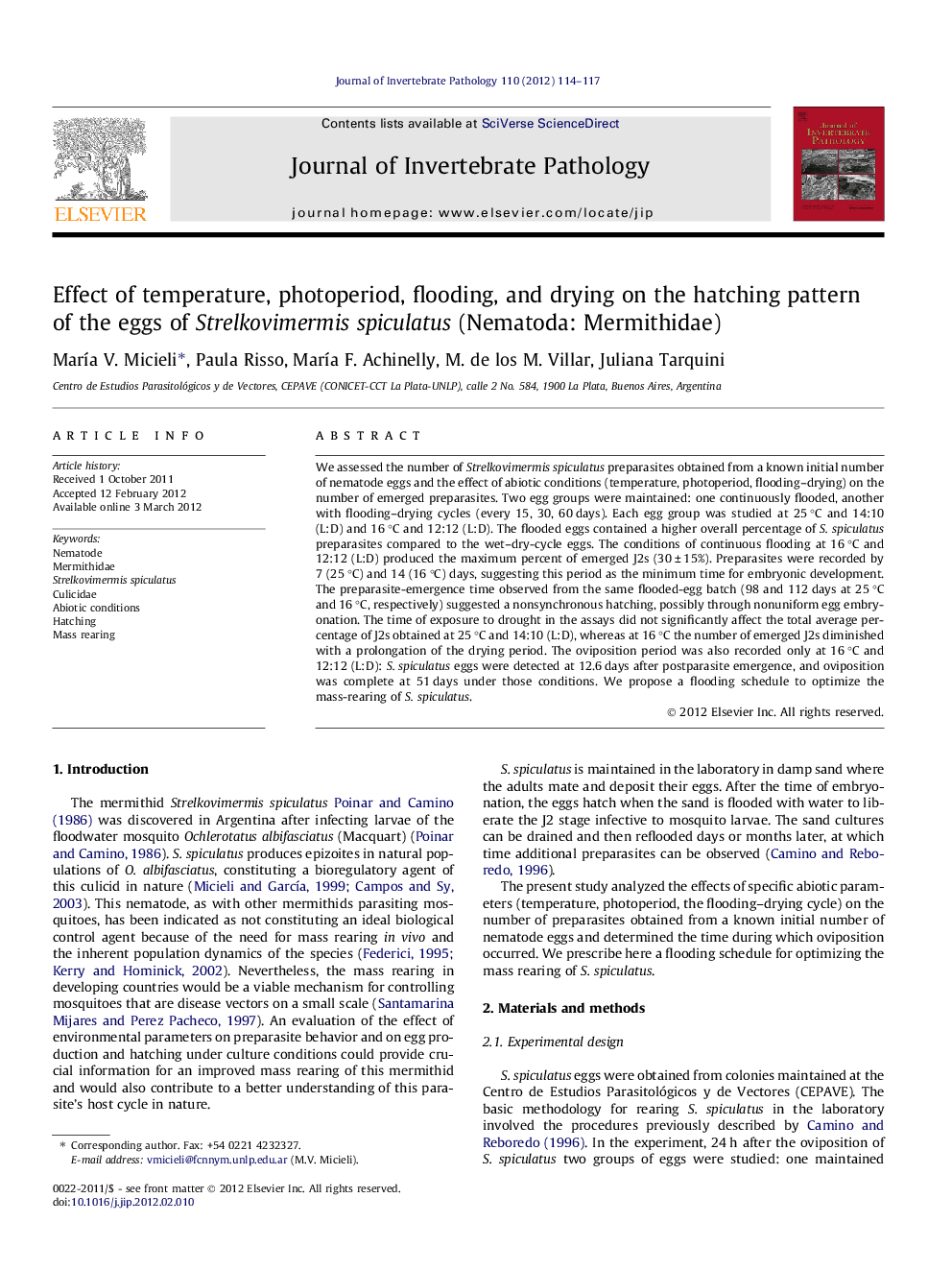| کد مقاله | کد نشریه | سال انتشار | مقاله انگلیسی | نسخه تمام متن |
|---|---|---|---|---|
| 4557930 | 1329909 | 2012 | 4 صفحه PDF | دانلود رایگان |

We assessed the number of Strelkovimermis spiculatus preparasites obtained from a known initial number of nematode eggs and the effect of abiotic conditions (temperature, photoperiod, flooding–drying) on the number of emerged preparasites. Two egg groups were maintained: one continuously flooded, another with flooding–drying cycles (every 15, 30, 60 days). Each egg group was studied at 25 °C and 14:10 (L:D) and 16 °C and 12:12 (L:D). The flooded eggs contained a higher overall percentage of S. spiculatus preparasites compared to the wet–dry-cycle eggs. The conditions of continuous flooding at 16 °C and 12:12 (L:D) produced the maximum percent of emerged J2s (30 ± 15%). Preparasites were recorded by 7 (25 °C) and 14 (16 °C) days, suggesting this period as the minimum time for embryonic development. The preparasite-emergence time observed from the same flooded-egg batch (98 and 112 days at 25 °C and 16 °C, respectively) suggested a nonsynchronous hatching, possibly through nonuniform egg embryonation. The time of exposure to drought in the assays did not significantly affect the total average percentage of J2s obtained at 25 °C and 14:10 (L:D), whereas at 16 °C the number of emerged J2s diminished with a prolongation of the drying period. The oviposition period was also recorded only at 16 °C and 12:12 (L:D): S. spiculatus eggs were detected at 12.6 days after postparasite emergence, and oviposition was complete at 51 days under those conditions. We propose a flooding schedule to optimize the mass-rearing of S. spiculatus.
Figure optionsDownload as PowerPoint slideHighlights
► Effect of abiotic factors on Strelkovimermis spiculatus preparasite emergence from numbered eggs.
► Maximum percent J2 emergence under flooding at 16 °C and 12:12 (L:D) photoperiod.
► First preparasites at Day 7 (25 °C) or 14 (16 °C) implied as minimum embryogenesis time.
► Prolonged J2 emergence after oviposition with flooding implied hatching asychrony.
► Higher J2 emergence when kept flooded than with any flooding–drying cycle.
Journal: Journal of Invertebrate Pathology - Volume 110, Issue 1, May 2012, Pages 114–117